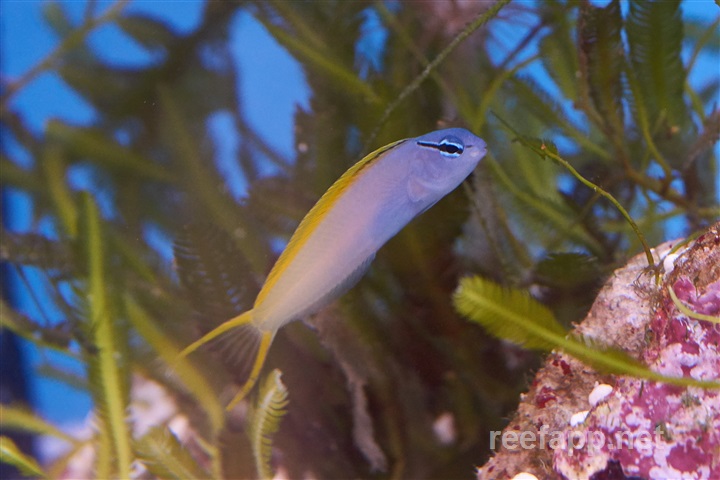Meiacanthus atrodorsalis

| Latin name | Meiacanthus atrodorsalis - (Günther, 1877) |
|---|---|
| Local name | Forktail blenny |
| Family | Blenniidae - Meiacanthus |
| Origin | East Indian Ocean, Australia, Japan, Indonesia, East Pacific, Central/West Pacific |
| Max length | 11 cm (4.3") |
| Minimum volume |
100 l (26 gal) |
|---|---|
| Hardiness |
Hardy |
| Suitable for aquarium |
Suitable for most aquarium |
| Reef safe |
Always reef safe |
| Aggressiveness | Mostly peaceful but might be aggressive towards similar species |
| Recommended |
Microalgea (Eg. spirulina) Small crustaceans (Krill, mysis, artemia...) Zooplankton (Cyclops, pods...) |
|---|
This species is known to jump out of open aquaria.
This species can be kept in a small tank, if it is specifically equipped to meet its needs.
It is recommended however, to keep it in an aquarium which is larger then described above.
This species thrives best when there is a sufficiently large amount of micro life (copepods, amphipods or similar) in the aquarium, so that the it can always find their own food.
This species can be bred in captivity, one can therefore consider asking your local fish store for a captive bred specimen.
These fish have small venomous teeth to keep larger fish at bay.
This is not normally dangerous for people, but it is painful when being bitten.
Fish in the genus Meiacanthus have small venomous teeth, used to defend against larger fish, which in turn will avoid them in an aquarium.
This kind of Blenny is ideal for small tanks, as long as there are plenty of living rocks and hiding places. It is relatively hardy, easy to keep and peaceful towards other fish.
There are many differences within the Toothcomb Blennies family, some eat algae whilst others eat zooplankton. There are many families of Blennies, this is merely one of them.
What they have in common are their oblong shape and long dorsal fin. Some species have small "legs" used to move around the bottom.
These Blennies do not normally get very big and are therefore a good choice for both small and large aquaria. They are not often very colorful, but many have a fun personality which many aquarists fall for.
The species of the families Aspidontus and Plagiotremus imitate Cleaner Wrasses and can therefore be difficult to identify.
| Aquarium trade | Yes |
|---|---|
| Distribution | Western Pacific: Bali and the Philippines east to Samoa, north to Ryukyu Islands, south to Rowley Shoals, the southern Great Barrier Reef, and New Caledonia; throughout Micronesia. Replaced by the uniformly yellow species ovalauensis in Fiji, and |
| English common names |
Yellowtail fangblenny Yellowtail poison-fang blenny Eye-lash harptail-blenny Eyelash fangblenny Forktail blenny Poison-fang blenny |
Kenneth Wingerter. 2012. Aquarium Fish: An Overview of Fang Blennies of the genus Meiacanthus - Advanced Aquarist - (English)
Bob Fenner. Saber-Toothed Blennies, Family Blenniidae, Tribe Nemophini - Wet Web Media - (English)
Jeff Kurtz. 2007. Combtooth Blennies: Bewitching Bottom Dwellers - Tropical Fish Hobbyist - (English)
Scott W. Michael. Reef Aquarium Fishes: 500+ Essential-to-know Species - TFH Publications / Microcosm Ltd. - (English)
Bob Fenner. The True/Combtooth Blennies, Family Blenniidae - Wet Web Media - (English)
Bob Fenner. Blennioids: Blennies and Blenny-Like Fishes - Wet Web Media - (English)

